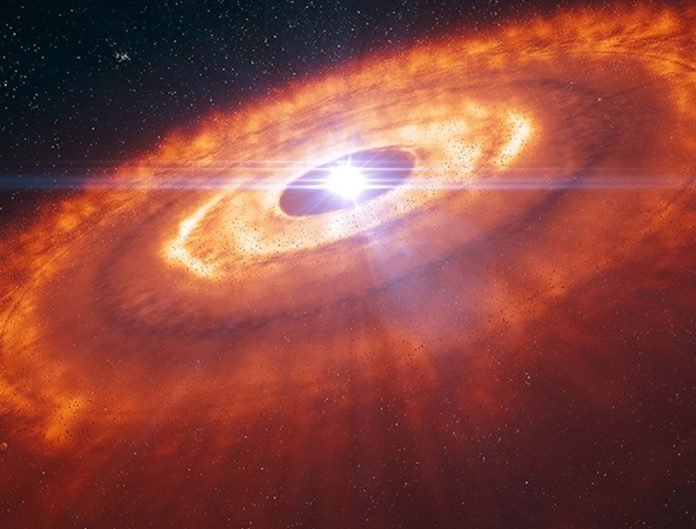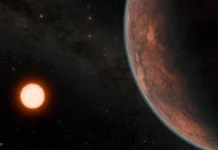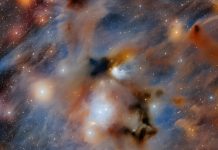
Our gleaming Earth, brimming with liquid water and swarming with life, began as all rocky planets do: dust.
Somehow, mere dust can become a life-bearing planet given enough time and the right circumstances.
But there are unanswered questions about how dust forms any rocky planet, let alone one that supports life.
Planets form inside protoplanetary disks, the massive rotating collections of gas and dust that swirl around young stars.
Rocky planets form when dust clumps together, which in turn forms larger and larger bodies. Eventually, there are planetesimals, the true building blocks of planets.
How exactly does the dust clump together in these disks?
There are two processes that allow dust grains to form larger and larger structures. One is coagulation, where dust grains collide with one another in the disk and stick together.
The other process is called streaming instability. In this process, dust grains moving through the protoplanetary disk experience drag. This concentrates them into loose clumps, which eventually self-collapse.
“If these clumps are massive enough, planetesimals could form by the self-gravitational collapse of the clump,” explains Ryosuke Tominaga of the RIKEN Star and Planet Formation Laboratory.
Tominaga is the co-author of new research published in The Astrophysical Journal titled “Rapid Dust Growth during Hydrodynamic Clumping due to Streaming Instability.” Tominaga’s co-author is Hidekazu Tanaka from the Astronomical Institute Graduate School of Science at Tohoku University in Sendai, Japan.
“There are two promising processes for planetesimal formation: direct collisional growth of dust grains and gravitational collapse of a dust layer,” the authors write in their paper. “Our results highlight the importance of numerical simulations that consider both coagulation and streaming instability.”
Tominaga and Tanaka examined the planetesimal formation process by creating models that simulate dust grains in protoplanetary disks. The models took into account factors like dust grain stickiness, the size of the grains, and their speed. Speed is critical since some previous research shows that if dust is moving too quickly, the grains won’t stick together.
“Some studies have suggested that dust grains are not so sticky and that their growth may be limited by fragmentation in planet-forming regions because of high collision velocities,” Tominaga said. “This is thought to be one barrier preventing dust growth toward planetesimals.”
The models compared the time scales for dust clumps to grow by both processes: coagulation and streaming instability. The results showed that both of them occur at similar rates. In fact, the pair are in a feedback loop.
Coagulation speeds up streaming instability and vice-versa. “Dust growth enhances the clumping efficiency, while stronger clumping promotes dust growth,” says Tominaga. “This feedback has been predicted to promote planetesimal formation.” Even a moderate increase in dust density because of streaming instability promotes dust coagulation.
“If a sufficient amount of large dust grains form and settle, planetesimal formation via gravitational instability will occur,” write Tominaga and Tanaka in their paper.
This research shows how both processes work together to form planetesimals and, eventually, planets. But there’s a lot of detail yet to be revealed before a more complete picture emerges.
Dust drift is one of the factors at work in a protoplanetary disk. Some dust moves toward the central star and is destroyed before it can grow. But clumping also leads to reduced drift.
The speed at which the bulk of the dust is moving is another factor. When combined with local turbulence, dust speed affects how easily grains can stick together and how quickly clumps can form.
Models like the ones in this research are useful tools for understanding what’s happening in a planet-forming disk. Better observations of planets forming inside these disks are the critical evidence needed to flesh out our understanding, but that’s difficult to achieve.
We know there are planets forming in these disks, but the formation process is hidden by gas and dust and by how far away young stars with protoplanetary disks are. But more powerful telescopes are always being designed, and better techniques for probing these disks are always being developed.
One day, astronomers will have an even clearer understanding of how rocky planets form, including ours.
Written by Evan Gough/Universe Today.



